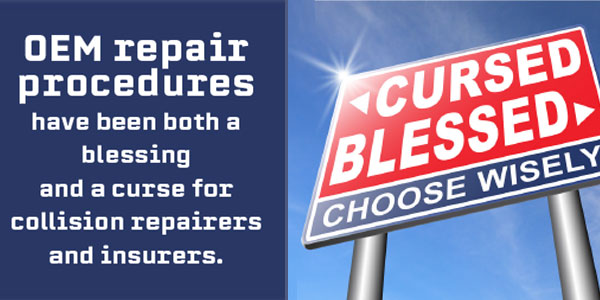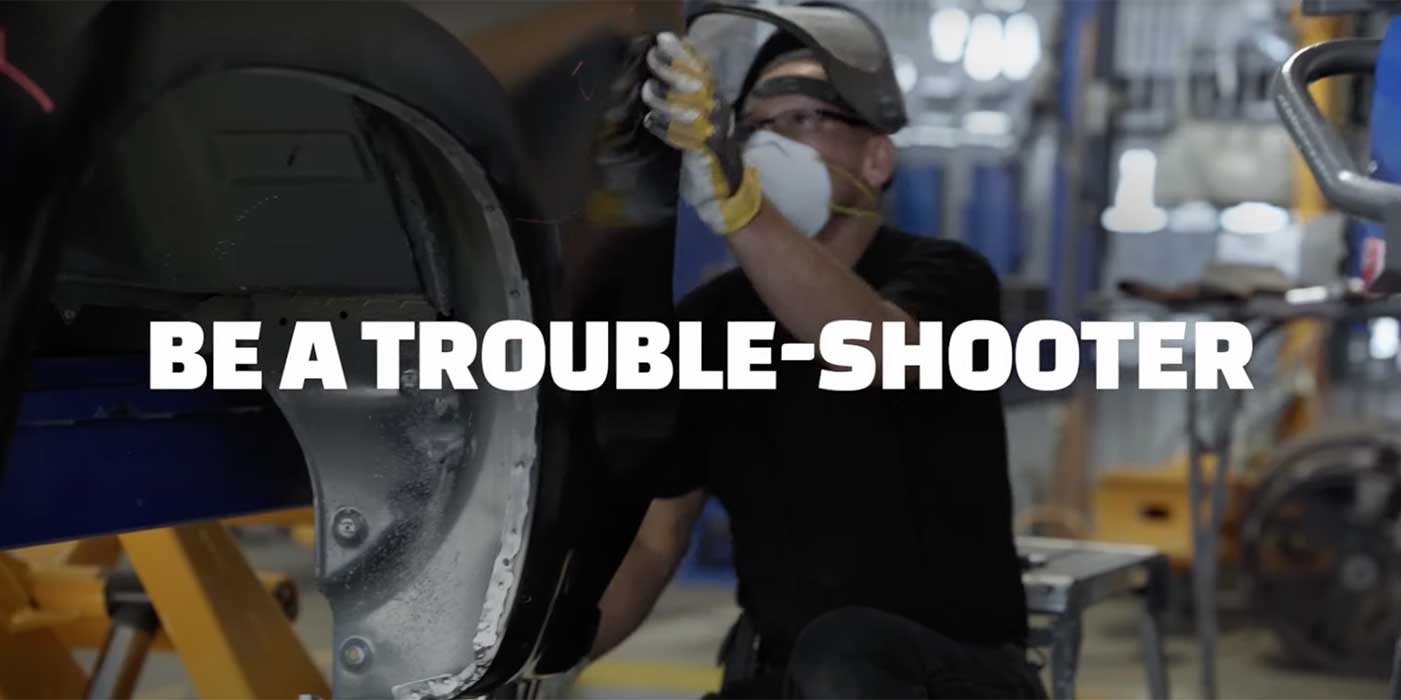Last month in my article, “The Right Way, the Wrong Way and Another Way,” I brought up collision repairers’ professional responsibilities and the notion of the collision repair industry developing and adopting an oath of professional ethics and conduct much like that of the medical industry’s Hippocratic oath, “To Do No Harm.”
OEM Repair Procedures
Today’s collision repairers are challenged with a new set of concerns, one being the need to follow OEM repair procedures. OEM repair procedures have been both a blessing and a curse for collision repairers and insurers. As the OEMs attempt to avoid potential liabilities and safeguard their products’ reputation via owner satisfaction, they have often erred on the side of caution. For example, when the OEM procedures state if a vehicle is in a collision, the repairer must access or remove the dashboard and/or steering column for inspection and/or measurement, the first question to be asked is: Do the facts of the loss support or dictate what must be done? And, to what level should it be done?

When the wind blows a shopping cart across a parking lot and it strikes a vehicle, that is a “collision” by definition. So, what is a repairer to do? Should he or she blindly follow the OEM procedures and perform the added activities, despite a professional and expert opinion that it is not necessary under the situation? Over time, will these invasive activities be the cause of squeaks and rattles that probably wouldn’t have happened had the repairer not dismantled these components? Is the repairer accepting potential liabilities related to potential failures and operational issues? These are questions repairers are dealing with on a regular basis across the country.
I can assure you that insurers are dealing with this issue on two fronts: one with the collision repair industry following the OEM procedures that may not be warranted and, on the other end, strongly encouraging the OEMs to better fine-tune their repair procedures so they’re less all-inclusive and more specific to the true needs under various circumstances. Insurers will no doubt threaten to place higher premiums on specific makes and models to encourage manufacturers to be less broad and more specific when writing required and recommended procedures. I believe we’ll see more concise procedures in the not-too-distant future.
The Commitments
We will delve a little deeper into this proposal in an effort to gain a better understanding of what should be considered and expected in meeting the listed commitments as follows:
- “The safety of my customers will be my first and foremost consideration.” In all we do as collision repair professionals, nothing is more important than a commitment to ensure the repairs performed will restore the safety aspects of the once-damaged vehicle (post-repair crash worthiness, function and reliability) to not only restore the safety of the repaired vehicle but also restore the operator’s and passenger’s peace of mind.
- “To have a sense of personal obligation to each individual consumer.” The collision repair industry is a person-to-person industry in that repairers interact directly with their customers often on a personal basis. Repair professionals must understand and show empathy for the stress and inconvenience consumers go through in their time of need for collision/cosmetic repair as well as be mindful of the uncertainty consumers face.
- “To make recommendations to the best of my training, ability and judgment.” This simply means that repair professionals should use their collective knowledge to offer suggestions to do the right things, in the right way, for the right reasons while always putting the consumer’s personal safety and economic well-being first.
- “I will only recommend procedures that I believe are reasonable and necessary.” This could be a difficult test for repairers, as they need to adhere to the best solutions with the consumer’s best interests at heart while managing potential liabilities for their companies.
- “I will only charge fees/prices that I believe to be reasonable and competitive.” Little needs explaining on this issue; however, it encourages constant vigilance and monitoring of your marketplace to ensure your pricing remains competitive and commensurate with other service providers who offer the same level of service and quality in the market area.
- “To perform high-quality repair services at a fair and just price.” Even repairs that fail to meet OEM recommendations can be done to the highest standards of workmanship.
- “Commit to the lifelong pursuit of education to improve my abilities and service.” In today’s ever-changing automotive industry, continual training is a requirement to stay abreast of the ongoing changes and enhancements repairers are confronted with.
- “Conduct business in a professional and courteous manner at all times.” It’s easy to become irritated or angry with customers and claims people. However, as professionals, we should maintain professional decorum at all times and treat others as we would expect to be treated regardless of the situation.
- “To employ and utilize the best skilled technicians obtainable.” No Super Bowl was ever won by a mediocre team, and we need to seek and hire the best people we can to represent our company at the highest level.
- “To care and protect the vehicle and its contents to the best of my ability.” When we have someone else’s property, we need to take every step and precaution to protect it while in our care. This may include simple things such as maintaining the battery to ensure it remains charged and covering the vehicle, its openings and interior areas.
- “To acquire and make available the latest training for our technicians.” Ongoing training is a commitment by and for the company to ensure it continues to offer the very best service based on up-to-date information and knowledge. Ongoing education is a must for collision repairers just as it is for the medical profession.
- “Uphold the highest standards and integrity of our industry and profession.” Each of us are the industry, and when we fall short, the industry falls short. It’s up to each of us to offer the highest level of service and quality to those in need.
- “To always conduct myself as a true professional in all circumstances.” We all have had those experiences where we or another person has responded poorly to a situation that should have been handled differently. A commitment to be the best you can be is the beginning of becoming a true professional.
- “To expose and help correct all known abuses within my industry.” One is either part of the solution or part of the problem. Not wanting to get involved is more or less a cop-out. Continued efforts to better the industry and customer experience should be the goal of every repairer, even if it means to expose fraud, poorly performed repairs and existing safety concerns.
- “To use only high-quality, proven merchandise sold by reputable firms.” Bogus/counterfeit airbags come to mind along with other defective and low-quality parts offered at the lowest prices regardless of whether they’re safety-related or not. This includes questionable parts supplied by one’s customer.
These are the 10 remaining topics which space does not permit me to address. However, the information provided above may be applied to most if not all of these:
- To list all parts and adjustments in the price charged for services rendered.
- Commitment to teach other industry professionals who swear the oath.
- I will expose wrongdoing, errors and omissions that may be discovered.
- I will not condone or attempt to hide errors and omissions.
- To adhere and follow all local, regional, state and federal laws.
- To apply established and accepted high-standard practices for proper repair.
- At all times, I will practice my profession with conscience and dignity.
- Inform and answer to the customer at all times relative to their repair.
- Maintain facilities that are safe, clean, and employee- and customer-friendly.
- Support my industry at the local, state and national levels.
As always, I am available if you have any questions. You can email me at [email protected].














